Antique & Global Textiles
From colourful, elaborately embroidered suzanis from Uzbekistan, to monochrome, geometric mud cloths from Mali, the bold patterns and pictorial elements of global traditional textiles lend themselves beautifully to footstool creations, and each one unique, displaying its own individual story of folklore and heritage.
Specialising in working with vintage textiles, traditional woven rugs, artisan weaves and fine fabrics, I take pride in creating unique designs which balance your size requirement with the cultural or historical expression of the piece.
Textiles for your stool
Following is a selection of textiles suitable for your footstool chosen from a remarkable global panoply, of which there are too many beautiful examples to mention.
In choosing to create a footstool from your textile, not only are you assured of a beautiful and unique design but also of a fascinating window into ancestral techniques and cultural symbolism handed down over generations.
Suzanis
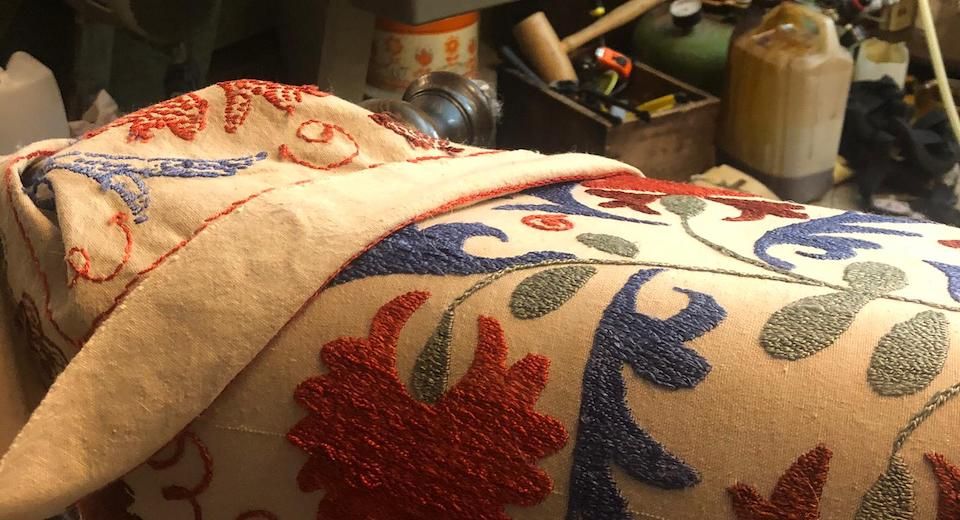
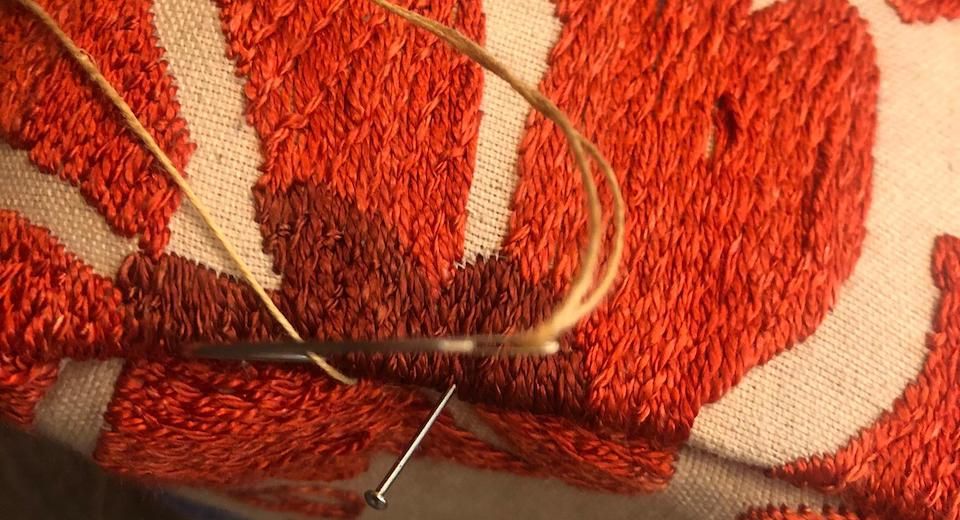
Suzania (from the Persian word “suzan” meaning needle), originate from Central Asian countries, notably Uzbechistan, Kazakhstan and Tajistan, and were originally made by brides an their mothers from nomadic tribes to form part of the wedding dowry, representing the binding of the two families.
Made from a base cloth of silk or cotton, the elaborate pattern and motifs including flowers, vines and fruits (particularly pomegranates), sun, moon are embroidered using silk threads coloured with vegetal dyes, on small looms using just four stick types.
Suzanis create beautiful footstools ...
The uniques formation of the motifs, symbols and pattern being the starting point of your design. Suzani designs and colours vary somewhat from region to region so enjoy selecting a style that will work well with your existing furnishings.
Uzbechistan is nowadays considered a centre of excellence of suzann production, with a resurgence since the 90’s of teaching this traditional art. Vintage pieces can be purchased in markets throughout Central Asia but antiques pre C19th are very rare. You can find new and vintage pieces UK outlets without the need to travel to Central Asia, perhaps start
Ikat Footstools
Ikat comes from the Malaysian word “mengikat” meaning “tie”, but the “tie dying” process involved in creating these textiles, particularly multi coloured designs, is highly complex: the threads are ties into bundles then dyes following a skilful coding system before weaving. Warp ikat tends to have a more precise design as the pattern can be seen on the look prior to weaving whereas, in the case of weft skates, the pattern cannot be seen until already woven through.
Ikat has long inspired Western textile designers to create their own ikat designs and sell these by the metre… Julia Brendell has a beautiful range of ikat fabrics which are woven on British looms and Jane Churchill’s upholstery ikat fabric is suitable for large scale upholstery projects like this large footstool.
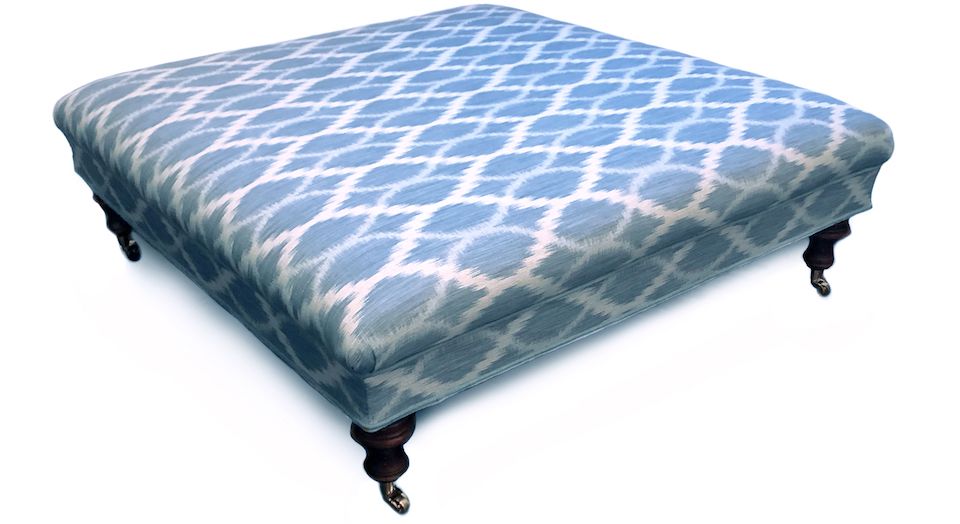
This ancient global textile technique seems to have developed independently in multiple cultures - Japan, Indonesia, Uzbekistan, India, Peru and even Africa
Depending on whether you have an antique piece of ikat cloth or you are purchasing it by the metre, there are multiple design options to choose from - for example for a traditional look, you might select a toll top style and trim with coordinating piping, finishing with French polished legs and brass castors.
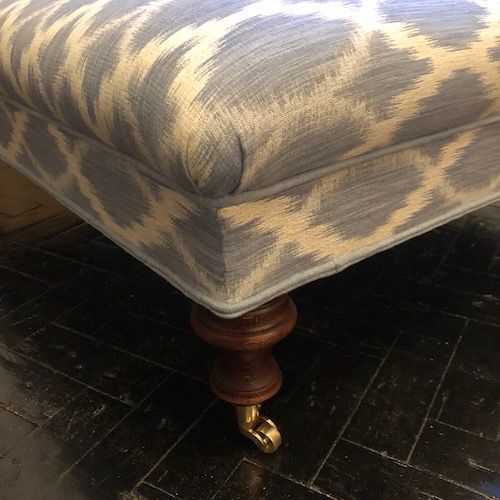
Antique Blankets & Shawls
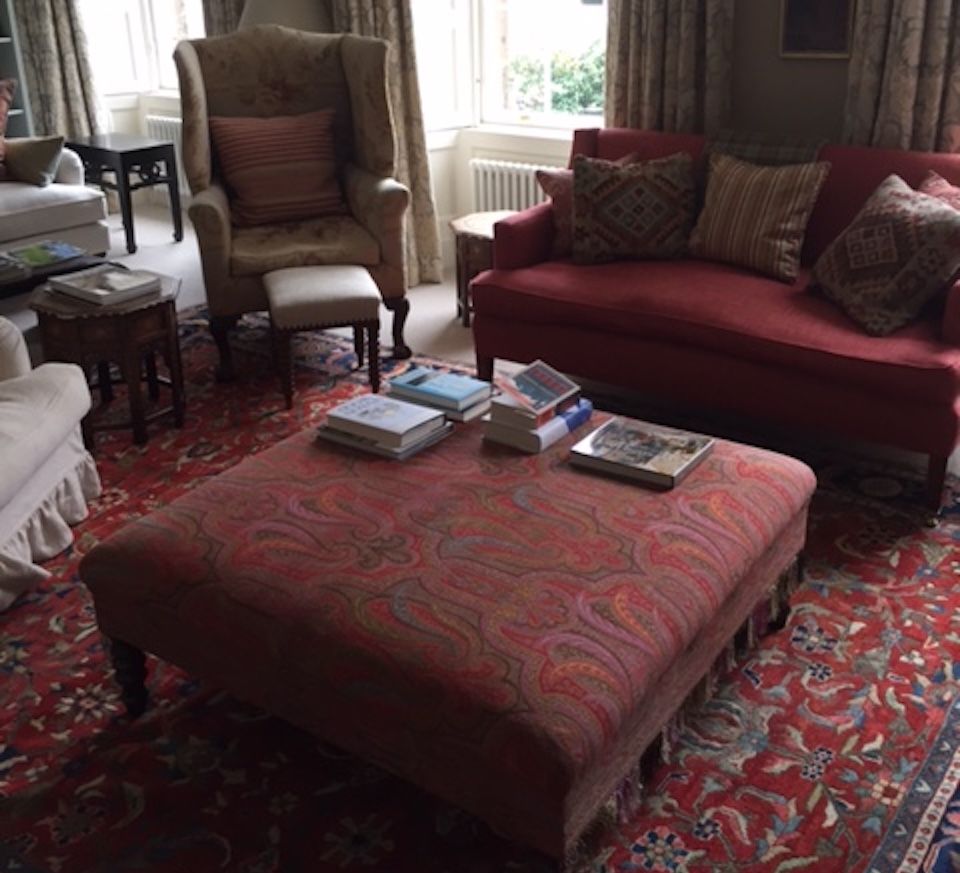
Antique blankets and shawls are ideal textiles for an intricate design full of historical and cultural value
Victorian paisley shawls such as this one were C19th replicas of highly desirable and expensive Kashmir shawls. With the arrival of the new Jacquard looms and the ability to weave intricate designs, these shawls were popularised and the weaving of them boomed throughout Europe, most notably in Paisley in Scotland, from where they take their name. They had a number of uses including for weddings, draping over crinoline skirts, or in this case, as a piano covering. Often they had a wool or silk fringe with a central motif or bordered pattern, which I retain within the footstool design so the original form of the textile is preserved.
Frazada Footstools
Frazadas are colourful woven blankets originating from the Peruvian Andes. Made from beautifully soft sheep or alpaca wool, the fibres of which are coloured with vegetal dyes, these blankets are woven to protect against the cold of the mountains. The weaving technique is passed down through generations with each frezada uniquely reflecting the individual weaver’s cultural beliefs and value. Because of their colourful stripe design and durability, these translate well into bold contemporary footstool designs to brighten any living area.
Rugs & Kilims

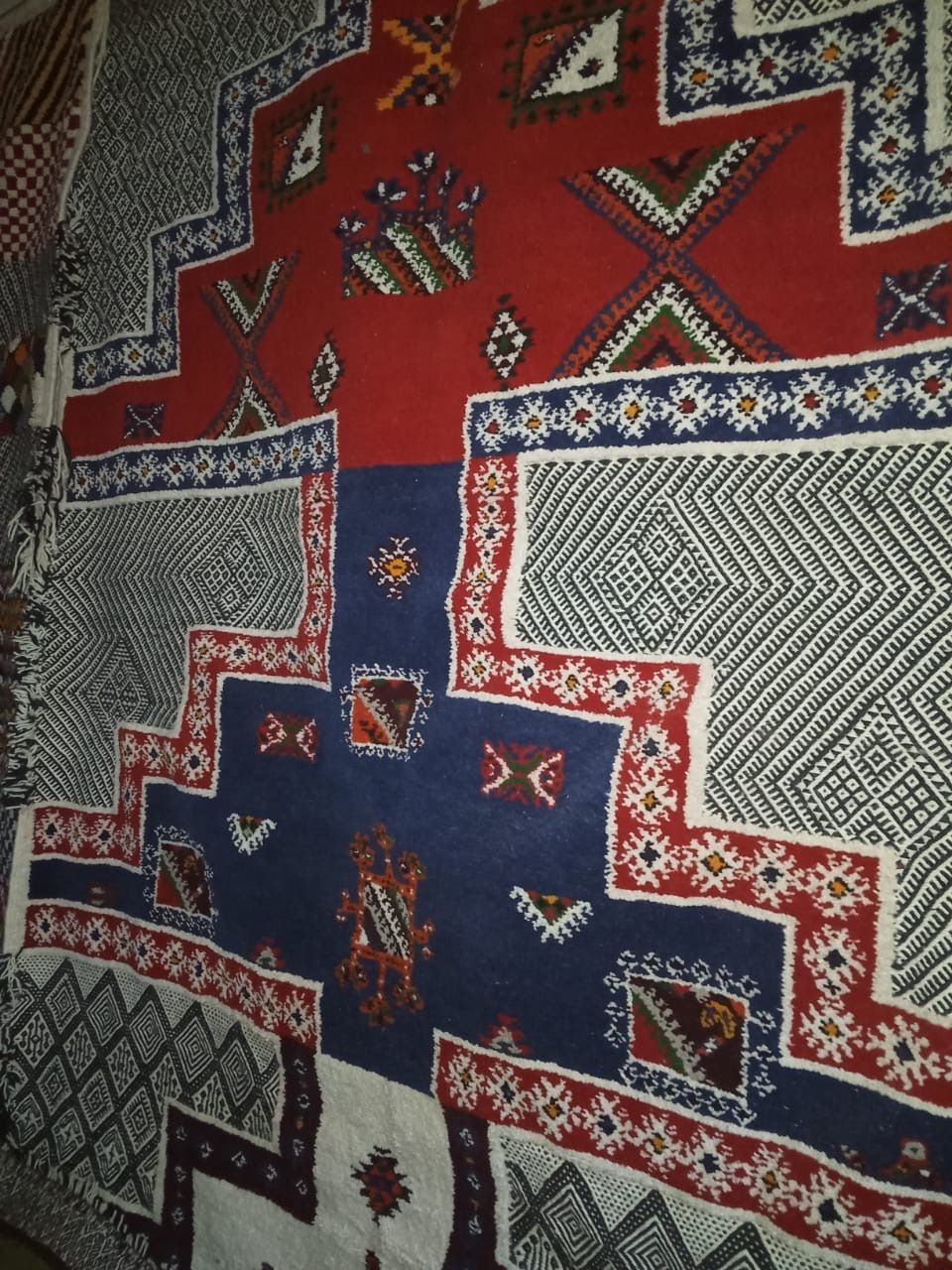
Berber Rug & Kilim Footstools
Artisan masterpieces reflecting cultural heritage can transform a living space. Here is a selection for inspiration.
Direct from the Atlas Mountains, woven by the women from semi-nomadic Berber tribes, Berber rugs are knotted with a Berber loop knot on vertical looms, a weaving technique that has been passed down through generations. Patterns and images, characteristically minimalist and abstract, may be spiritually symbolic (for example lozenge, chevron and diamond shapes can represent fertility) but these should not be interpreted too rigidly as the patterns are as unique as the weaver and reflect their wishes, hopes and fears.
Rugs made in the Middle Atlas mountains with the most severe weather conditions in winter, can have a pile of up to 7cm. Like the popular white/cream rugs woven by Beni Ourain confederations of 17 tribes. Rugs made by the tribes in Azilal from High Atlas mountains have a lower pile (4cm), a white background with freeform random shapes and design. Boujad rugs from Haouz, a landscape of hills and plains between the Middle Atlas and Atlantic Ocean, are characteristically red, orange and pinks with intricate and creative designs.
Choose any of these unique rugs woven by the tribes of Ait Ouaouzguite confederation in Jbel Siroua region of Southern Morocco Atlas Mountains. Also known as Taznakht rugs (Taznakht is the principal weaving town of the region), these are ideal for your footstool due to the supple quality of the silky “Sirouwa” wool and striking colours, in particular yellows, reds, blues, dyed with natural herbs such as henna, saffron, madder, indigo, pomegranate. Glaoui rugs from Taznakht combine weaving techniques such as flat… missing text
Turkish Kilim Footstools
Hugely popular, Turkish kills are “split-woven” tapestries with no pile. Traditionally created for use as prayer mats and floor coverings for nomadic tribes, these textiles are particularly suited to footstools built to the precise dimensions of border and pattern, thereby exhibiting to best effect the geometric design. Traditional tribal weavers’ motifs included wolves and scorpions to represent fertility, with some regional differences prevalent.
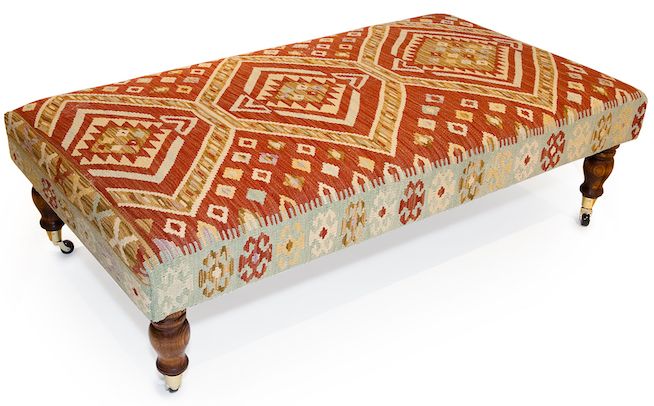
Modern kilim rugs based on original designs are widely available and translate well into footstool designs. For vintage originals…go to a specialist supplier.
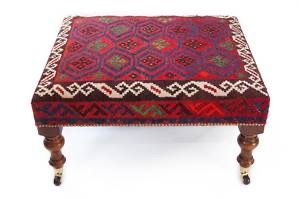
Baluchi Rug Footstools
Baluchi Carpets are made by nomadic Persian speaking tribes living near the border with Iran, Pakistan and Afganistan. The tribes weave into the rug design their own original signature motifs. However, commonalities amongst Balochi rugs are the use of geometric and tribal motifs, a very refined hand knotting technique, darker hues such as purplish browns, and a distinctive extend “Somak” flatware section at both ends of the rug. You can buy these carpets in the UK from … or online from… Your Baluchi rug will be in good hands as the stool frame can be built to its exact measurements, meaning there is no loss of original geometric design.

Website by Greenleaf. All rights reserved.

